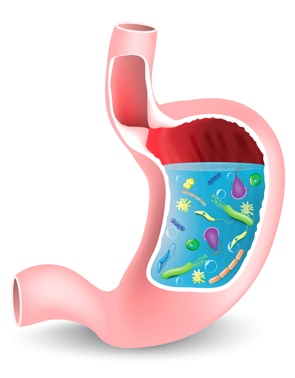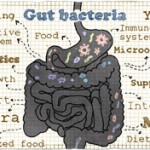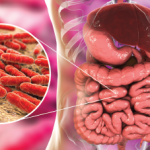
Designua/shutterstock.com
It is of interest, then, that two recent studies have come to the opposite conclusion about the single dominant genus present in the Burkina Faso intestines, namely Prevotella. Lukens and colleagues studied the role of the microbiota in a mouse model of chronic recurrent multifocal osteomyelitis (CRMO) mediated by a mutation in the proline-serine-threonine phosphatase-
interacting protein 2 (PSTPIP2) phosphatase.8 Prior to onset of the disease, normal PSTPIP2-deficient mice harbor Prevotella genus at approximately a 10-fold increased abundance compared with wildtype mice, with this abundance increasing at least 20 fold at time of disease. Interestingly, mice fed a high-fat diet (HFD) neither developed this outgrowth of Prevotella, nor did they develop disease, a highly reassuring finding for those of us who fear auto-inflammatory bone disease more than cardiovascular disease. Evidence that the changes in the contents of the microbiota were responsible for the altered disease state included abrogation of the disease with antibiotics, and transfer of the protection mediated by the HFD through fecal transfer from HFD mice to naive mice. Thus, microbiota with high Prevotella genus content may be a contributing risk factor for development of immune disorders.
Another study implicating Prevotella as a potential bad actor in inflammatory disease was a study of newly diagnosed rheumatoid arthritis (RA) patients attending the rheumatology clinic at New York University.9 Scher and colleagues evaluated the intestinal microbiota of 44 new-onset rheumatoid arthritis (NORA) patients and 28 healthy controls (HC), in addition to 26 subjects with chronic RA. High abundance (≥5%) of one particular species of Prevotella, P. copri, was found in the intestines of 33/44 NORA vs. 6/38 HC, a highly statistically significant difference. Having a high abundance of P. copri appeared to compensate in some patients for the absence of the shared epitope HLA alleles that are strong risk factors for RA. Direct evidence that this organism had a pro-inflammatory potential is that colonization of dextran sulfate (DS)-treated C57Bl/6 mice resulted in severe colitis, compared with DS-treated mice gavaged with control media. Moreover, DS-treated animals experienced more weight loss compared with mice gavaged with a species from the Bacteroides genus.
These studies raise the possibility that some bacteria serve to promote arthritis in children, or even subsets of children, & that others play a protective role.
This comparison with Bacteroides is a particularly appropriate choice, because Bacteroides and Prevotella tend to occur in inverse proportions to one another in individual microbiota. This was not only observed by Scher and colleagues, but also in a large study of adults living in the Philadelphia area by Wu et al, in which they correlated intestinal microbiota with dietary intake patterns.10 Consistent with their previous work demonstrating the presence of enterotypes, or predominant intestinal bacteria, they found two basic patterns of fecal microbiota: one dominated by Bacteroides and the other by Prevotella (see Figure 1), with the latter seen in subjects with high starch intake in their diets. This is consistent with the Burkina Faso study, in which the high Prevotella in those children was attributed to their agrarian lifestyle; as well as the Lukens study, which demonstrated that a high-fat diet resulted in loss of Prevotella. Thus, dietary manipulations could be used to reduce intestinal Prevotella, and the studies by Lukens et al and Scher et al suggest that perhaps this would be a good idea.8,9

